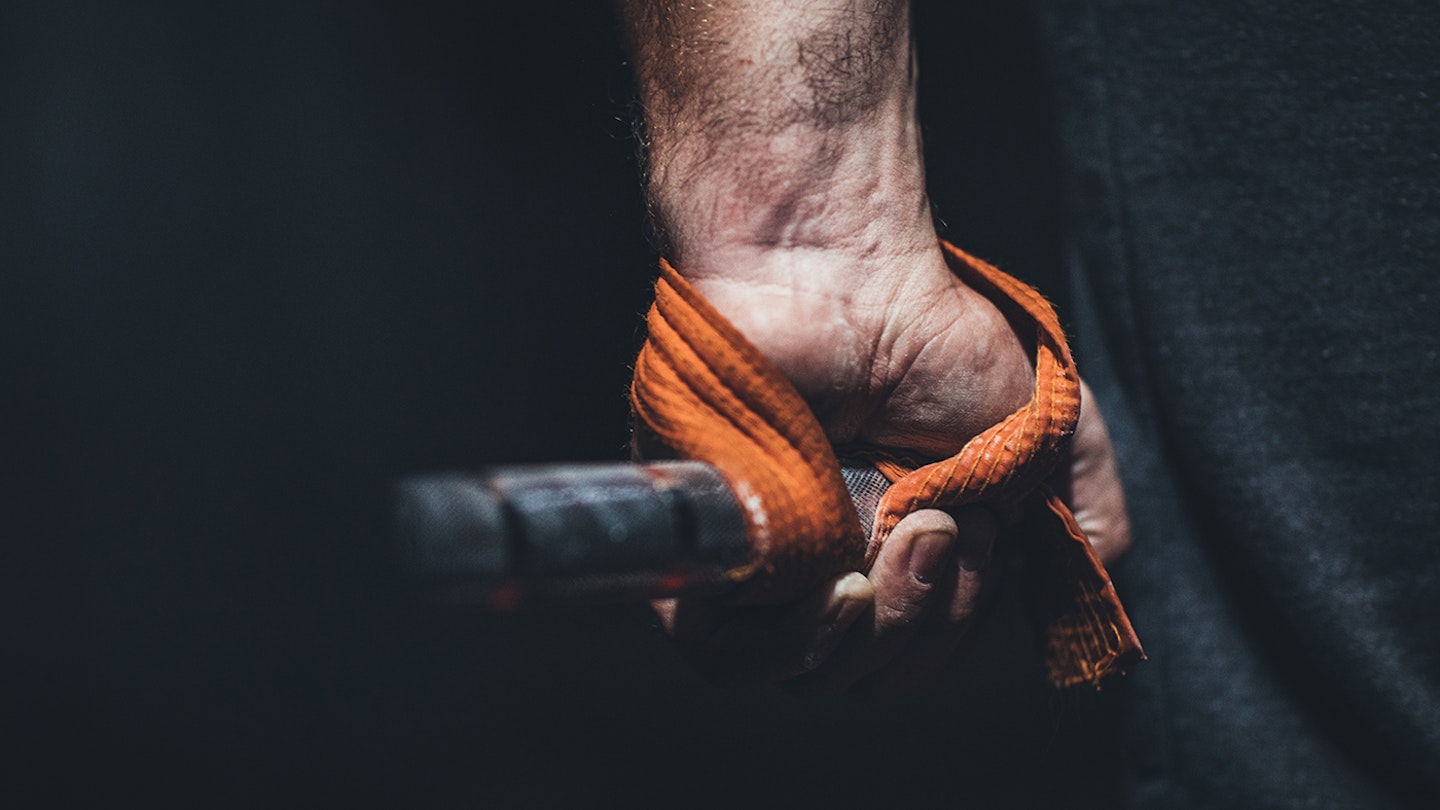If you're trying to hit a new personal record on your deadlift, a pair of the best lifting straps will help give you the grip and confidence that you need to help you reach your lifting goals. Lifting straps are simple yet effective tools designed to enhance your lifting experience, especially during pulling movements like deadlifts, pulldowns, and rows. These straps consist of material looped around your wrist, featuring a long strap that can be securely wrapped around the barbell, dumbbell, or cable attachment you're lifting.
The best lifting straps at a glance:
• Best overall lifting straps: Gymreapers Lifting Wrist Straps - View now on Amazon
• Best lifting straps for small wrists: Gymshark Silicone Grip Lifting Straps - View now on Gymshark
• Best lifting straps for tight budgets: Bulk Lifting Straps - View now on Bulk.com
Shop the best lifting strap deals on: Gymshark | My Protein | Amazon
The inevitable frustration of grip strength limitations often surfaces before our larger muscles reach their full potential. Our forearms fatigue far quicker than our lats and upper back, and if we just give in when they do, we are potentially limiting the training of the other muscle groups. Lifting straps come into play to address this challenge. While alternatives like liquid chalk can assist with grip issues caused by slipping palms, lifting straps offer a dedicated solution for pulling more weight.
Using lifting straps can unlock the potential for hitting personal records and, surprisingly, contribute to improved form. They become valuable tools for targeting specific muscle groups for strength and hypertrophic goals. For instance, employing lifting straps during single-arm cable rows can alleviate tension in the forearm and bicep, allowing you to channel more energy into contracting your lat muscles.
We're going to explore a diverse range of options, from traditional lifting traps to advanced, high-tech materials that promise an unyielding grip. Discover how the right pair of lifting straps could be the secret weapon you've been missing to break through your lifting plateaus and achieve your fitness goals.
The best lifting straps
Best overall lasso lifting straps
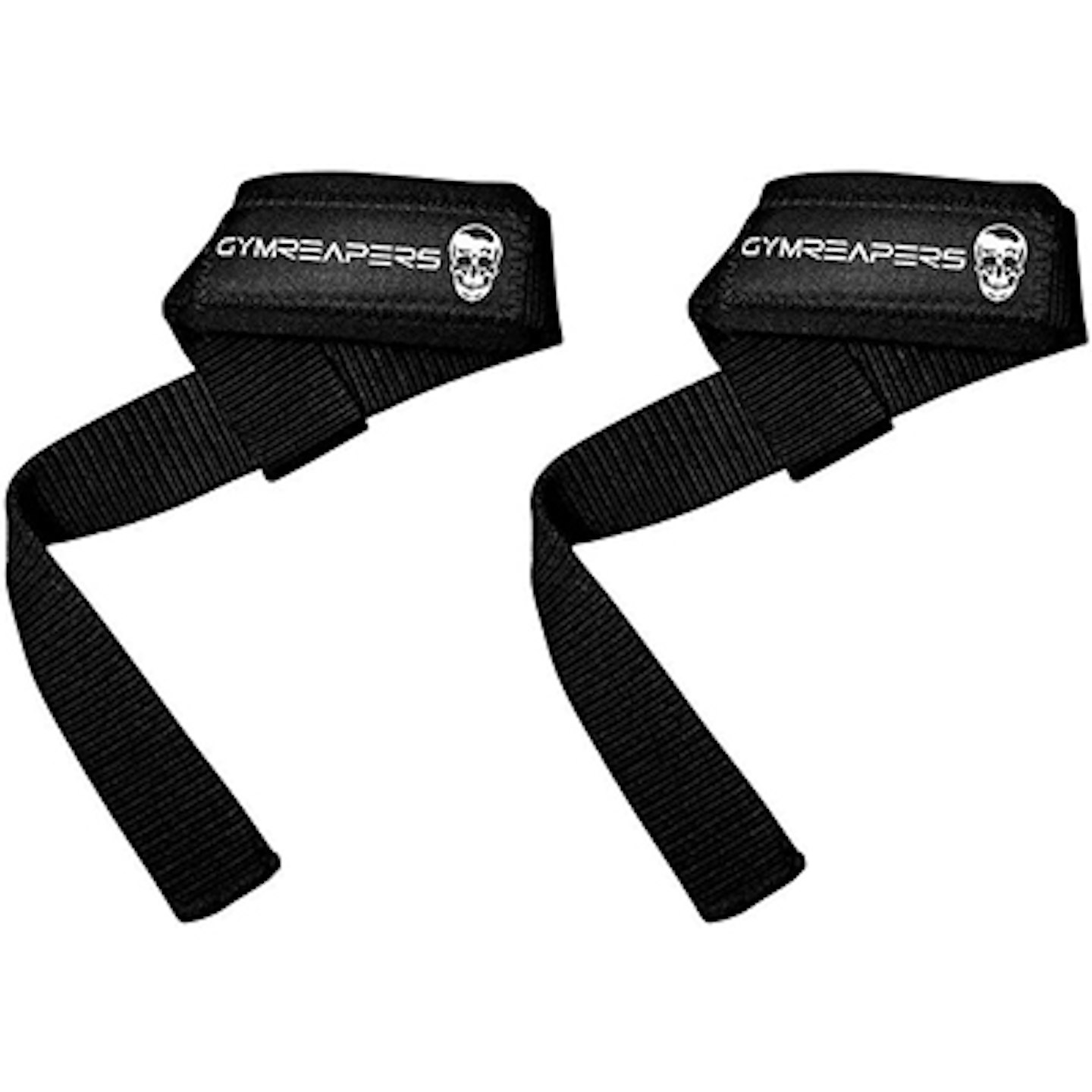
When it comes to gymwear and fitness equipment, Gymreapers are a brand you’ll see pop up frequently. These lasso straps have over 12,000 reviews with a satisfying 4.7 star rating, so you know they're going to be good.
They are slightly longer than usual, so you’re able to wrap them around the bar two or three times to enable a tighter grip and support your heavy lifts. The neoprene padding ensures your wrists aren’t left with any red marks afterwards and reviewers raved about how comfortable these felt. There’s also a great colour selection to choose from, which is always welcome.
Pros
- Available in multiple colours
- Neoprene padding to support your wrists
- Made from a blend of cotton for extra comfort
Cons
- Some may find the length of the straps irritating
| Material | Neoprene |
| Colours | Black, Tan, Red, Pink, Green, Grey, Navy |
| Size | 18 inch |
- Customer review: "I couldn’t deadlift or lunge any higher weights because I just couldn’t keep hold of the dumbbells. But the first time I tried the Gymreapers lifting straps, I was able to go up in weight right away! So helpful. To make sure you wear them correctly, check out the Barbell Logic video about lifting straps on YouTube, he does a great job showing how to wear and use them."
Best lifting straps for tight budgets

www.bulk.com
While lifting straps aren’t going to break the bank, if you’re trying them out for the first time, we suggest opting for a pair that isn’t too pricey. These lasso lifting straps from Bulk are affordable, have wrist protection padding and are comfortable with no sharp stitch edges. They’ve also got a decent strap length, so you can freely tighten or loosen your grip.
Pros
- Very affordable
- Padding to protect wrists
Cons
- No friction means a fiddly setup
| Material | Unknown |
| Colours | Black |
- Our review: “As someone who only occasionally opts for lifting straps on heavy deadlift days, I didn't want to splash out on anything too fancy. I also wanted to avoid a problem I'd had with my old lifting straps - namely, wrist bruising and friction marks caused by the tension of the strap. The Bulk lifting straps have solved my issue - they are affordable, so I'm not fussed that they aren't used regularly, and when they are, the neoprene padding keeps me free from unsightly bruising. The only downside I've encountered is that the material has basically no friction on the bar - this means that wrapping the straps takes a few moments longer than I would like to get it just right. Having said this, once they are under tension and under your grip during the pull, they are solid." Tested by William Lobley, Deputy Tech and Fitness Editor.
Best figure 8 budget buy
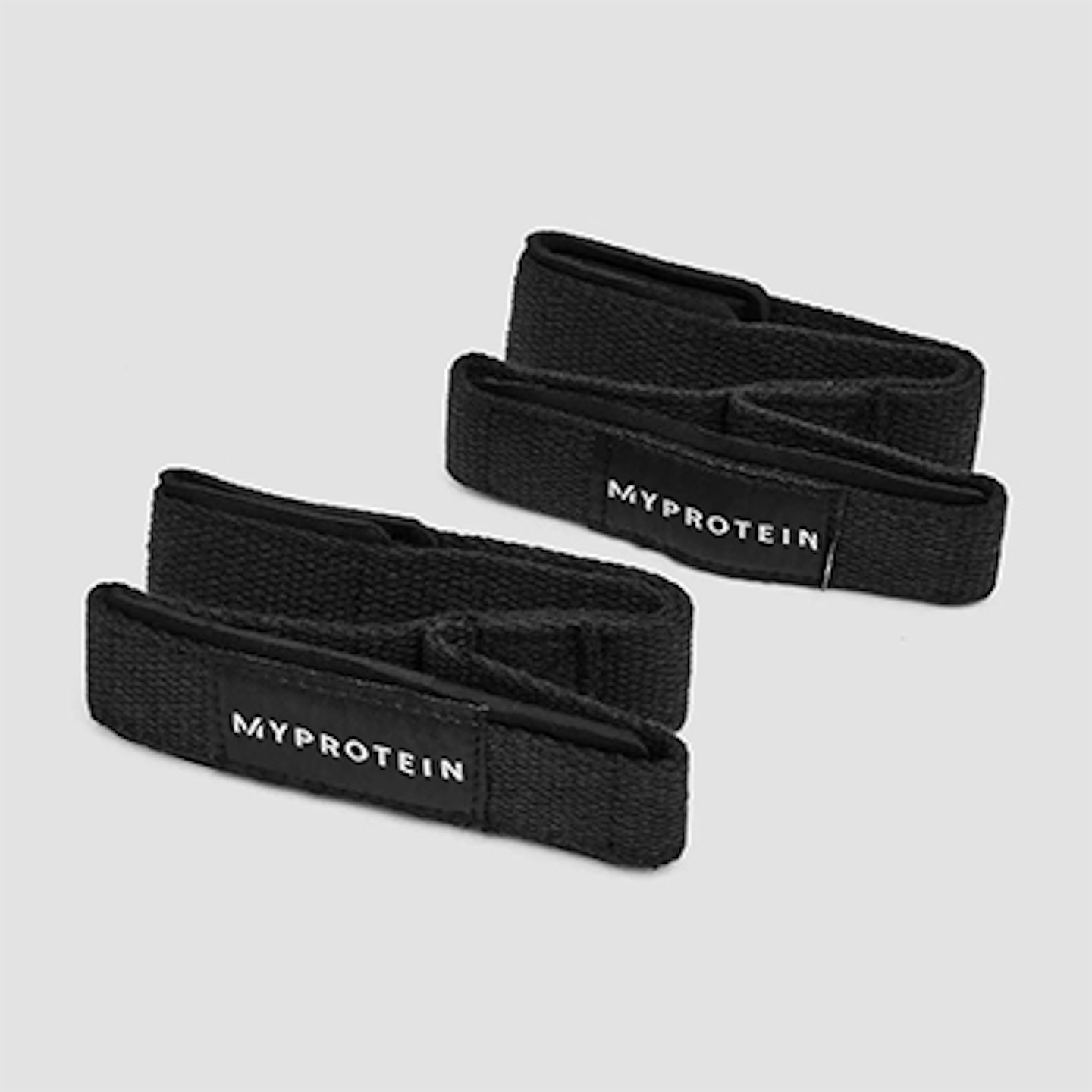
www.myprotein.com
Strongman Eddie Hall broke the 500kg deadlift record in 2016 using figure 8 lifting straps, so if they’re good enough for him, then they are for us, too. Again, these ones from My Protein are a great budget buy and ideal if you’re trying out these types of straps for the first time. The foam padding on both of the loops prevents the material from digging into your wrists. Their circumference is 38cm—40cm.
Pros
- Affordable
- Padded foam to protect wrists
Cons
- Only come in one size, so measure before you buy
| Material | Unknown |
| Colours | Black |
| Size | Circumference 38cm-40cm |
- Customer review: "Bought the My Protein lifting straps as an experiment when my old conventional style straps were starting to wear. I was very sceptical how these could work effectively but I was pleasantly surprised. They are quicker to use than the old style wraparounds (more reason to hit those heavy drop sets) and offer as much grip and support during the lift as well. Easy to use, just slam them round a bar, and 'wind them up' (you'll know what I mean if you use them) and fire away. Plus, Eddie Hall broke a dead lift world record with them, so all the cool kids are using 'em now. Good value, would recommend for powerful back sessions."
Best lifting straps for powerlifting
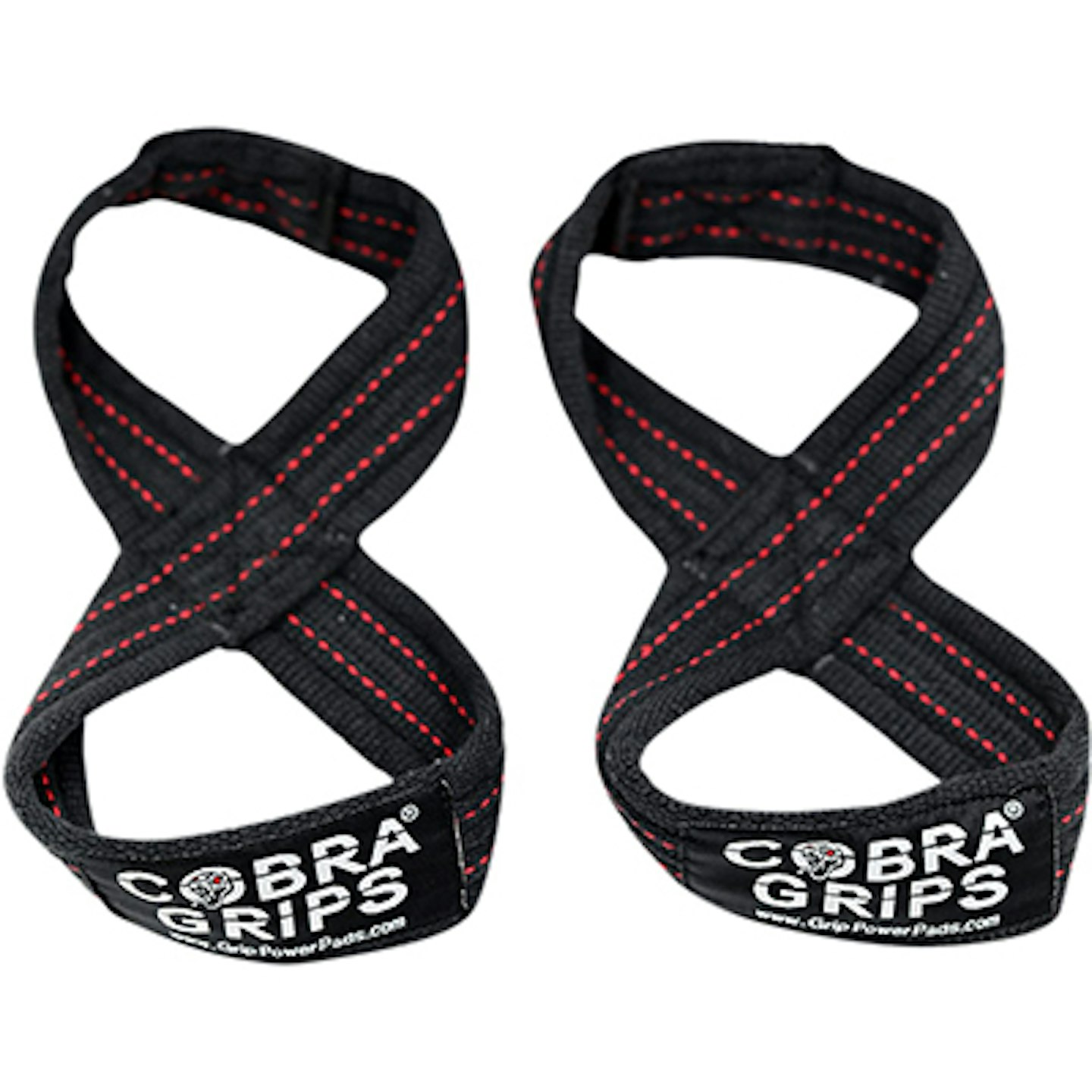
If you’ve struggled with finding the correct-sized figure 8 lifting straps, then Cobra Grip can help you out. With three different sizes to choose from, you’ll be able to find the perfect size for your wrists which, in turn, will help you reach those all-important PBs. They don’t have any extra padding as they’re made from durable, high-quality cotton with heavy cross-stitching to withstand the heaviest of lifts. Plus, they’ve been tested on strongman contestants, so you know they’re going to last.
Pros
- Great size range
- Made from good quality material that’s durable and long-lasting
- Multiple different colours to choose from
Cons
- Beginners may not like that these don't have padding
| Material | Cotton |
| Colours | Black, Blue, Green, Red |
| Size | Up to 60cm wrist circumference |
- Customer review: "SHOULD HAVE BOUGHT THE COBRA STRAPS EARLIER. I've stalled on my deadlift for a while now (my squat has almost caught up!) and have tried various straps and grips to move past it. Hook grip works for my warm up sets (too painful for working set!) Switch grip is better but left hand (I'm right handed) still suffers. I've never been able to get on with the wrap around the bar straps. So finally I ordered these Figure 8 straps. Wish I had done it sooner! My Deadlift has been stuck at 120kg for 5 reps due to grip. With these straps I easily pulled 125kg with no issues. So much so that I tested a couple of 1RM singles after my work set. 150kg single pulled with no issues! Can't rate these highly enough, 5 stars!"
Best premium lifting straps for Olympic lifting
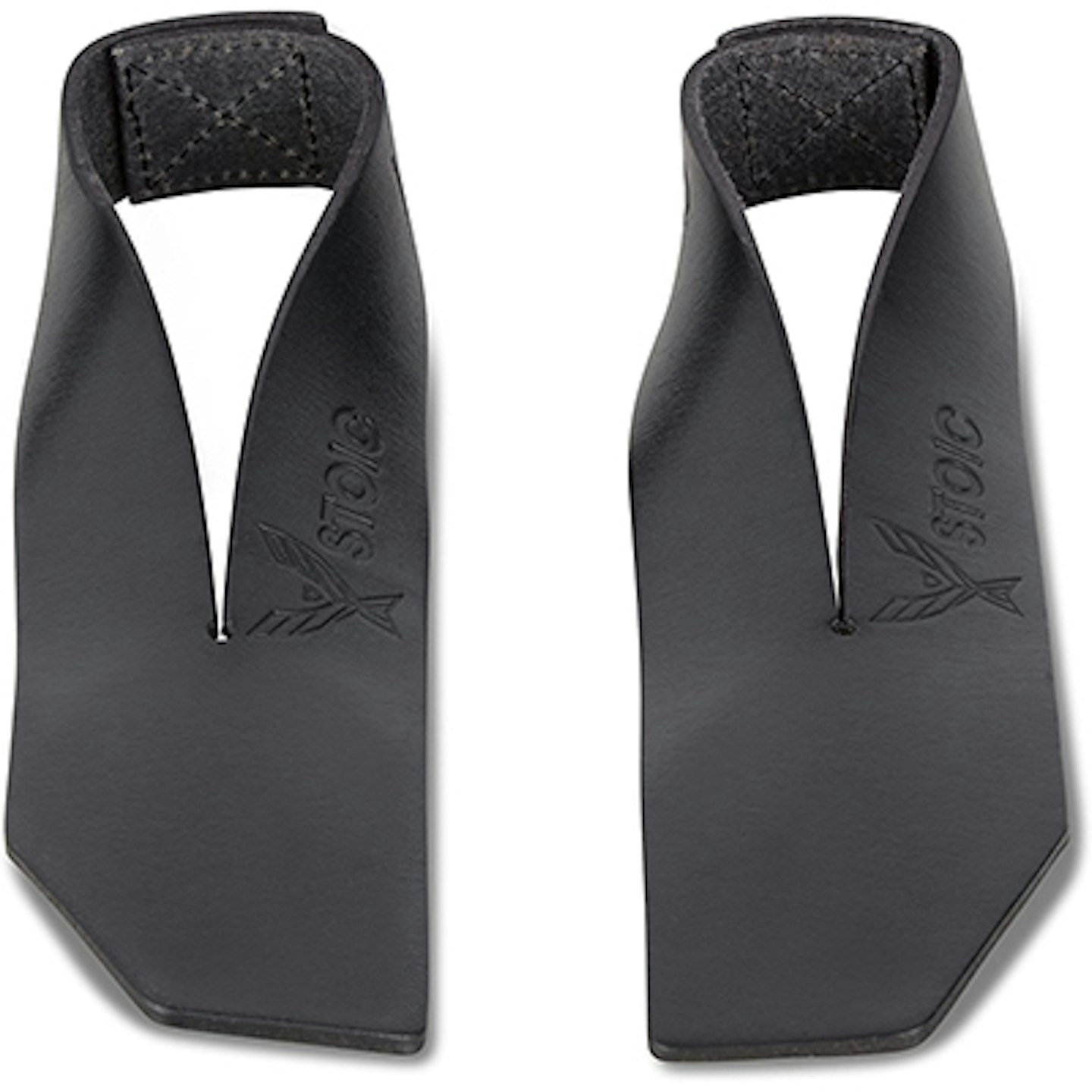
ninefit.uk
These genuine leather Olympic lifting straps will allow you to have a firm grip on the bar, while still being able to release it quickly. The 3mm leather is durable, but also thin enough to feel like you are still holding the bar without straps. It’s also stronger than other materials used for lifting straps, such as cotton and nylon. Plus, we like the fact that these require minimal wrapping.
Pros
- Genuine leather is grippy, durable and long-lasting
- Sleek, minimalist design
- No cinching or tightening around the wrist
Cons
- Not ideal for beginners and is best for Olympic lifts
| Material | Leather |
| Colours | Black |
- Customer review: "I bought the Stoic Olympic Lifting Wrist straps because the bar was always tearing my hands up during RDLs at the squat racks. I wasn’t able to get very heavy because my fingers were working harder than the important muscles. Ever since trying these, my hands are super comfortable on the bar and I have no problem lifting heavy! Definitely recommend this product."
Best Olympic lifting straps for style
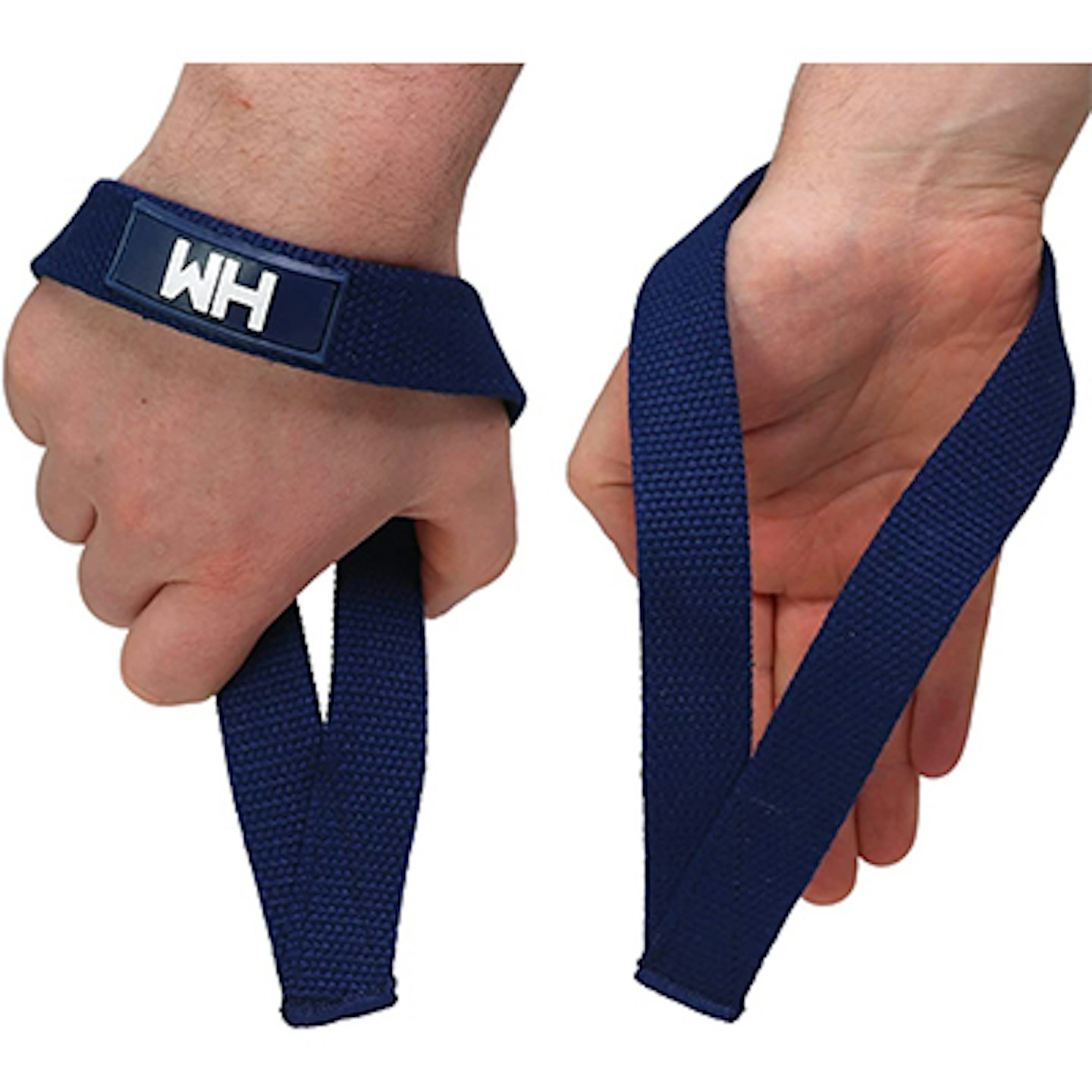
Tried, tested and used by multiple international weightlifting medalists, these Olympic straps are durable and performance-worthy. Their short length allows for a fast setup and release, which is essential during those big Olympic lifts. They're made from heavy-duty dual-ply cotton, so they're durable and long-lasting, with industrial-grade kevlar stitching, so that they can support your heaviest PB.
Pros
- Six colour options
- Short length is easier to apply to the bar and release
Cons
- Not recommended for beginners
| Material | Cotton |
| Colours | Blue, Black |
| Size | L20cm, W10cm, H1cm |
- Customer review: "Bought the Weightlifting House Wrist Straps recently and used during a couple sessions including heavy compound movements. Will give 5 stars after testing durability. Stitching is done to a quality standard. Overall construction is good and simplified as it is thinner and shorter in length. This helps with quickly disengaging during movements and releasing the weight. Overall, satisfied with the purchase. I also appreciate the colour. Black and grey are really boring."
FAQs
What are lifting straps?
These weight-lifting accessories are exactly what they say on the tin - they’re a strip of fabric that you wrap around your wrist and then the piece of equipment you’re trying to lift in order to aid your grip.
“Lifting straps are an accessory used in weightlifting and strength training to increase grip on free-weight exercises,” says Alan Morton, a sports tutor at TRAIN Fitness. “They allow the lifter to maintain a better grip and stop the weight from slipping. They are especially useful on exercises like deadlifts, or rows, which greatly stress the hands and forearms. They’re generally made from heavy-duty cotton, nylon and, occasionally, leather.” There are three types of lifting straps: lasso, a figure of eight and closed-looped, but more on that later.
What are the benefits of using lifting straps?
Just like weightlifting shoes or a weightlifting belt, lifting straps can help enhance your performance during a heavy lift. Their primal benefit is to help you move more weight in exercises like deadlifts, rows or shrugs, without jeopardising your form.
“These exercises have large muscle groups driving the lifting force, and grip strength often can't keep up,” says Alan. "The strap allows a more secure grip by reinforcing the strength of the wrist and effectively making the bar part of the body.”
But it’s not just your grip they can help with, as Alan explains they’re great for supporting weak and injured wrists.
“The tension through the strap forces the wrist into more optimal biomechanical positions for lifting and reduces the likelihood of excessive stress on the tendons and ligaments of the wrist joint,” he says.
Who should use lifting straps?
Simply, anyone who is looking to lift heavier. However, they shouldn't be used all the time as they can limit the development of your grip strength. However, as an accessory, they have many benefits.
As we mentioned earlier, if you’re training to compete, for example in a powerlifting competition, lifting straps aren’t allowed. Therefore, while they may be beneficial in parts of your training, you would also need to learn how to strengthen your grip naturally.
If you’re a beginner you probably won’t need them straight away in your training either.
“The focus for beginners should be on form and getting the body used to the movements, not optimising intensity or training volume,” says sports tutor Alan Morton. “However, experienced lifters training for strength, or hypertrophy, can benefit significantly from straps.”
Which weightlifting straps should I be using?
Here’s a breakdown of three different straps to help you decide which to try:
Lasso: The most common lifting straps, also known as loop straps. These straps have a stitched loop on one end, which you then feed the other end of the strap through to create a loop. You then put your wrist through this loop and then wrap the remaining bit of strap around the bar. For a tighter grip, you can wrap it around the bar multiple times. “It's a versatile strap that is easy to use,” says Alan. “Many training goals can be achieved with this type of strap.”
Figure 8: These are very secure, with two loops that look like a number eight. They loop around your wrist, then the barbell and then your wrist again for double security. “Serious strength athletes tend to favour figure eight straps, as they offer additional support and double the connection between the wrist and the bar. These provide superior support to standard straps when lifting very heavy weights for maximum lifts, especially the deadlift.”
Closed loop: Also known as Olympic lifting straps. These are a loop of material often used for Olympic lifts because they allow for a quick release. You put your hand through the loop and then wrap the remaining part of the loop hanging down from your wrist around the bar. As this strap doesn’t wrap around the wrist fully, it allows athletes to let go of the bar quickly, if needs be.
How do I use them?
This video shows you exactly how to apply each strap we've featured above to the bar. As you'll see, they're all very straightforward and easy to apply. With a little practice, you'll be lifting heavier in no time.
Bryony Firth-Bernard is a Health and Fitness Product Writer for What's The Best. She specialises in strength training.
Subscribe to the What’s The Best Newsletter to keep up to date with more of the latest reviews and recommendations from the rest of the What’s The Best team.
